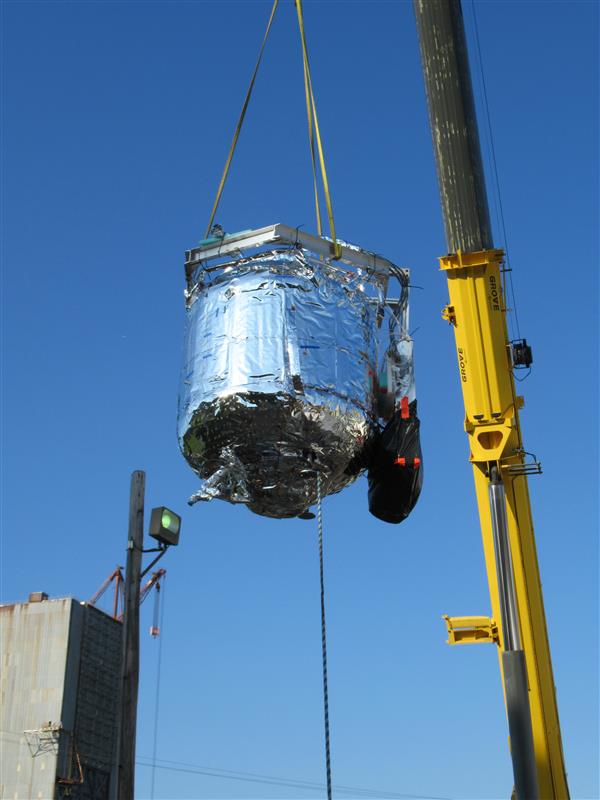NASA Innovates Cryogenic Fuel Storage Technologies for Space Missions

NASA has initiated a groundbreaking series of tests at its Marshall Space Flight Center in Huntsville, Alabama, focusing on innovative cryogenic fuel storage technologies essential for long-duration space missions. This testing campaign aims to enhance the management of super cold fluids, particularly liquid hydrogen and liquid oxygen, which are critical for propulsion systems in space exploration.
As part of this initiative, NASA's teams are utilizing a two-stage cooling approach to mitigate the phenomenon known as 'boiloff,' where cryogenic propellants can evaporate due to various heat sources. This method was outlined by Kathy Henkel, acting manager of NASA's Cryogenic Fluid Management Portfolio Project, who emphasized that reducing propellant loss is vital for the success of future missions to the Moon and Mars. According to Henkel, "Technologies for reducing propellant loss must be implemented for successful long-duration missions to deep space like the Moon and Mars."
The cryogenic fluids in question are typically stored at extremely low temperatures—approximately minus 424 degrees Fahrenheit for liquid hydrogen and minus 298 degrees Fahrenheit for liquid oxygen. Despite the cold environment of space, these fluids are susceptible to heat absorption from onboard systems and solar radiation, leading to potential propellant loss.
The innovative two-stage cooling technique employs a method known as 'tube on tank' cooling, which integrates two cryocoolers to maintain the required low temperatures. Helium, which has been chilled to about minus 424 degrees Fahrenheit, circulates through tubes affixed to the outer wall of the propellant tank, significantly reducing heat transfer. This setup, placed within a vacuum chamber in Test Stand 300, is intended to allow for the long-term storage of cryogenic propellants during both transit and planetary surface operations.
The current testing phase began in early June and is scheduled to continue for 90 days. It is crucial for NASA's ambitious strategy to establish a sustainable human presence on Mars, which will necessitate the storage of large quantities of cryogenic propellant in space for extended periods. Henkel noted that previous missions have only utilized cryogenic fuels for durations shorter than a week, highlighting the need for advancements in storage technology for more extended missions.
"To go to Mars and have a sustainable presence, you need to preserve cryogens for use as rocket or lander return propellant," remarked Henkel. Currently, rockets are designed to manage propellant through a buffer, accounting for potential losses in short missions. However, for human exploration endeavors to Mars, which require significant quantities of propellant, a more refined approach to storage is necessary.
The Cryogenic Fluid Management Portfolio Project represents a collaborative effort across various NASA centers, including the Glenn Research Center in Cleveland, Ohio. This initiative falls under NASA's Technology Demonstration Missions Program, part of the agency's broader Space Technology Mission Directorate. The project involves over 20 individual technology development activities aimed at enhancing cryogenic fluid management capabilities.
In summary, NASA's efforts to innovate cryogenic fuel storage technologies are not just about maintaining propellant efficiency; they are foundational to the United States' aspirations for deep space exploration and eventual human settlement on other planetary bodies. With these advancements, NASA is positioning itself to tackle the challenges of long-duration space missions, paving the way for humanity's next giant leap into the cosmos.
Advertisement
Tags
Advertisement





